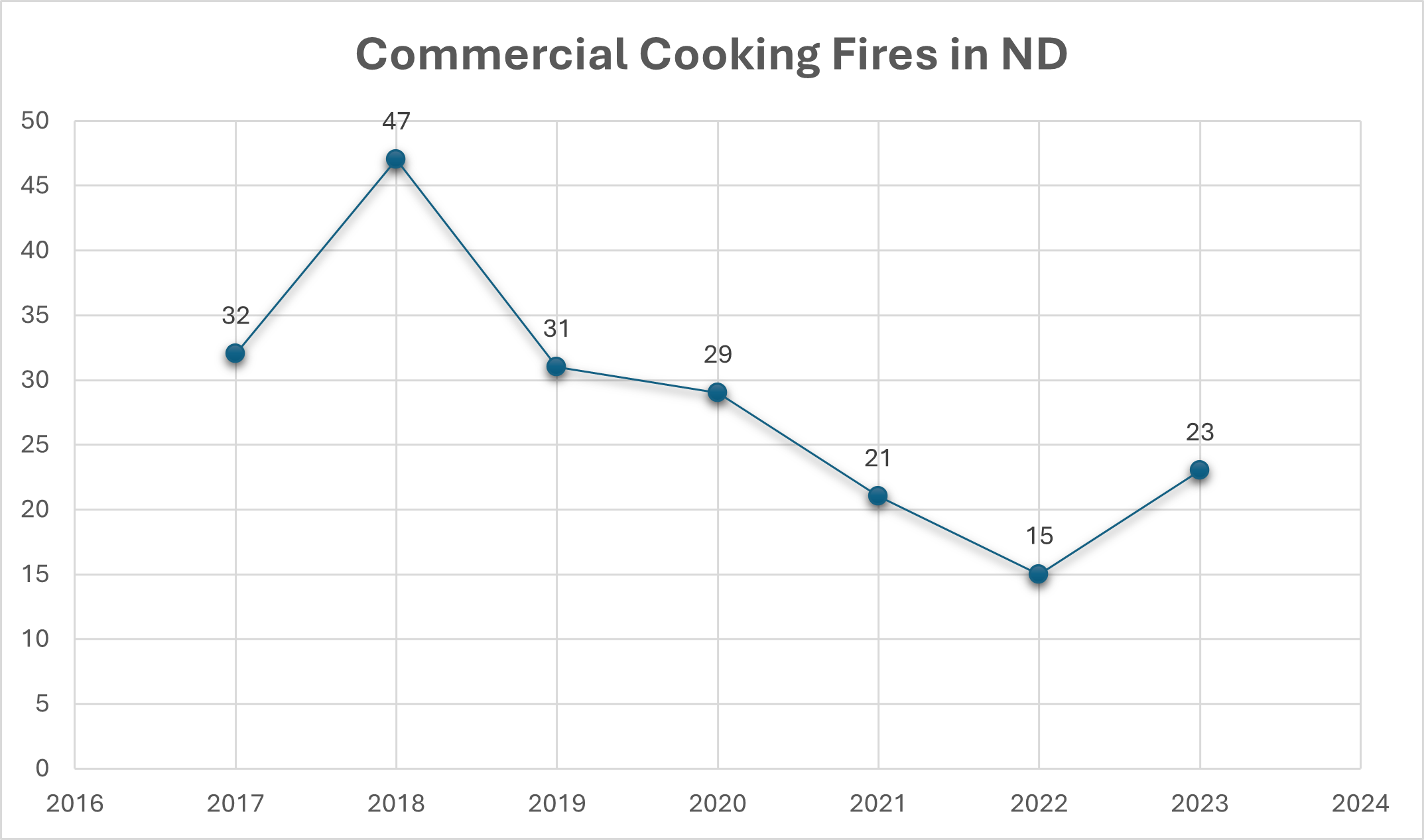
By Jess Sinerius, Senior Deputy Fire Marshal
Commercial kitchens are at a high risk of fires due to the daily use of cooking oils, grills, and other equipment that may generate heat and flames. During routine inspections, I have seen boxes, lightweight plastic bags, Styrofoam cups, and other combustible materials stored on gas ranges, flat-top griddles, and ovens. I have also come across an excess amount of grease accumulation on hoods, floors, countertop surfaces, and stored items in proximity to fryers. It’s good practice to always consider cooking equipment as on or in operation. Do not store items on stove tops, in the oven space, on griddles, or in proximity to fryers. Some of the most common fire hazards are:
- Grease Accumulation
- Overheated Cooking Oil
- Improper use of cooking equipment
- Open Flame
- General Housekeeping
Things to look for while conducting fire safety inspections to help reduce the most common fire hazards are:
- Grease does not accumulate on the hood or walls, and it is not in proximity to appliances.
- Cooking appliances are not unattended when in use.
- Adequate clearance of cardboard, paper materials, and plastic materials are being maintained from heat producing equipment and open flames.
- Proper placement and service of K-extinguishers.
The North Dakota State Fire Marshal’s Office has adopted the 2021 International Fire Code.
Chapter 6, Section 606, Commercial Cooking Equipment can assist you in determining what type of commercial hood may be required.
A Type I hood is required above all commercial cooking appliances and domestic cooking appliances used for commercial purposes that produce grease vapor. This includes food trucks. Chapter 9, Section 904.13, discusses commercial hoods and commercial cooking suppression systems. The most common commercial cooking suppression systems we see are pre-engineered automatic wet chemical extinguishing systems that shall be tested in accordance with UL 300 and listed and labeled for the intended application.
Our office can assist you with a plan review to determine if a Commercial Cooking Suppression System (Type I Hood) is required. If it is determined that a commercial hood or suppression system is needed, all fire protection system plans need to be submitted and reviewed by our office prior to installation. The application can be found on our website at www.firemalshal.nd.gov. Links for all relative codes can be found on our website. For more information or questions contact the State Fire Marshal’s Office.


